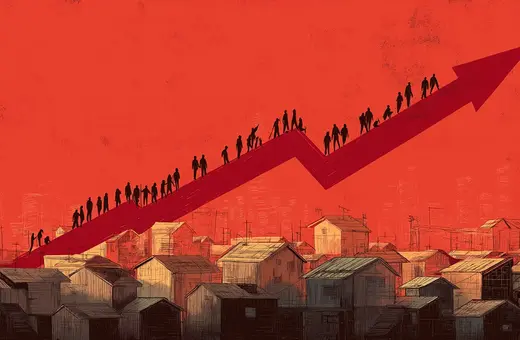Wages have been stagnant across much of the west over the last 40 years. Economists have blamed globalisation, innovation and an ageing population but perhaps the source exists within the market itself. David Cabrielli, a Professor of Labour Law, argues that we need to inject more competition into our job hunt, to boost wages and tip the scales away from corporations.
The West is in dire need of a pay rise. Indeed over the last 30 years, pay has fallen against the cost of living. But why is this the case? In recent months, stories about nurses, junior doctors, ambulance workers, transport workers and teachers taking strike action have hardly been out of the media. Not just in the UK, but also in the US, France, Germany, and other nations internationally. Trade Unions have been making pay demands to offset this most recent rise in the cost of living. Most reporting has focused on this source of the demands alone. However, trade unions are also calling on employers to make good real-terms declines in wages that have been sustained over 40 years of low wage growth. The British Medical Association for example is calling for a 35% pay rise to return to 2008 pay adjusted for inflation. To understand why wages have stagnated, it is useful to focus on why and how a decline in living standards may occur. But this wage stagnation goes deeper than energy price inflation.
To uncover the source of this stagnation, we need to understand a relatively unknown concept, that of monopsony. There are several causes of wage stagnation. First, the economy may experience sluggish GDP growth. This often arises where levels of productivity lag behind other countries, this being the change in economic value, per worker, per unit of time. Secondly, the cost of goods and services might go up, as in the current cost of living crisis where there has been an increase in the level of inflation. In the current environment, this is largely attributable to external factors such as the oil and gas shock generated by the war in Ukraine. Finally, there can be a fall in the standard of living if wages stagnate in real terms. Real meaning adjusted for inflation.
For the past forty years, wages have eroded in the UK and many other countries, when measured in terms of the GDP share. For example, what the statistics reveal is that the percentage of GDP paid out to workers in the UK as wages, income, earnings and salary – called the “labour share” – has dropped by around 5-6% since the early 1980s, while the proportion of income going to shareholders – called the “capital share” – has increased approximately by the same figure. While 5-6% may sound like a small figure, on the scale of nations this is an enormous sum. This equates to £52bn that would have gone to labour using 2022’ GDP.
___
Employers have extensive power over labour and labour markets are ever more concentrated
___
This is quite shocking, since until recently, economists had held firm to the view that the ratio between the labour and capital shares of GDP was constant so that if wages declined, the capital share would drop at the same rate and stabilise at the same ratio. However, recent statistical evidence has discredited that presumption.





















Join the conversation